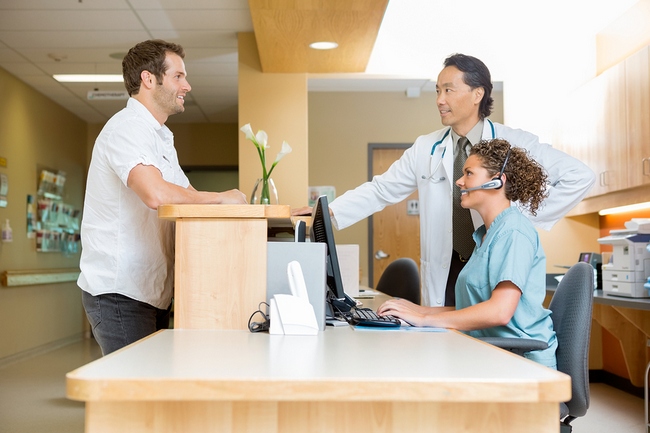- Make It Yourself Lavender Heart-Shaped Bath Bombs!
- 20 Things You Never Knew About “Down There”
- 12 Best Foods For Those Suffering From Arthritis Pain
- 12 Personal Hygiene Mistakes Almost Everyone Makes (Mom Never Told You About #4!)
- 15 Medicinal Plants And Herbs From The Cherokee People
- 12 Mind-Blowing Benefits Of Drinking Coconut Water During Pregnancy
- 12 Outstanding Winter Foods That Won’t Fatten You Up Like A Christmas Turkey
Hospitals Could Improve Health of Patients with This One Thing
If you take a walk through any hospital you what do you see? Patients, lying in beds, dark rooms with fluorescent lights, right? If there happens to be a window, it probably has blinds or curtains and they are closed. Caring nurses working in what amounts to tunnels with little or no natural sunshine. Artificial lights and lamps, televisions in every corner. No sunlight, no natural plants, nothing that would connect someone with life.
Unfortunately, people spend more time pouring over paperwork than they do finding ways to let the sunshine pour into the building. Hospitals should be the leaders in organic gardening, offering fresh, wholesome foods for their patients. Large greenhouses could provide food year around and uplifting places for visitors, as well as patients, to walk around and get some much needed sunshine.

Photo credit: bigstock
The very world, healing, comes from the Saxon word haelen, which means to make whole. That isn’t the same as curing, which is more about erasing disease or fixing health problems. People can experience healing even if they aren’t cured, correct? This is where natural sunlight comes into play.
Sunshine inside a hospital. Sounds like a great idea, doesn’t it? This might never happen, however, since it will be next to impossible to get modern medical personnel to admit why many patients need to be hospitalized in the first place, let alone admit that patients might recover faster if they had whole foods for complete cellular recovery. The main reason most people are hospitalized in the first place are the side effects from the pharmaceuticals they are taking that wrack the body with pain and causes organs to not work properly because they are being poisoned. Too many doctors are only too happy to help “cure” those side effects with, of course, more pills. Read more why antibiotics are bad news for your health.
It’s time to allow hospitals to “come alive” again, lifting the spirits of both patients and their staff members by allowing the universal medicine that heals all people: the natural light of the sun. The free flow of vitamin D from the sun can be easily incorporated into hospitals to help the body’s natural immune system encourage recovery of the body. Natural sunlight can also help to brighten the mood of the staff, help to lower stress levels, as well as cut energy bills since electric lights can now be lowered or turned off completely.
SEE ALSO: Compelling Evidence that Avoiding the Sun is Dangerous
Research shows that when nurses are able to access sunlight, they communicated more effectively, laughed more, and had significantly lower blood pressure. Nurses handled their patients more effectively because they were in better moods. Nurses often have to put up with a wide range of patients and their moods and this can be quite demanding over a long shift. When sun shine was allowed into nurses work stations, the nurses moods, alertness, and cognition. Having natural sunlight helped to fight off sleepiness in the staff and improved workplace safety.
It’s fairly obvious that hospitals could lower stress levels and tension if they allowed daylight into work spaces. Sunlight is a smart, yet affordable way to bring laughter and good moods into the work place.
If sunlight can help to improve the moods of the nurses that work in hospitals, imagine what it might do for patient outcomes! Patients put in more positive environments that included sunlight could improve their moods as well as their overall outlook on their recovery. Designing the right workspace, as well as recovery space, could be of benefit to everyone involved.

































